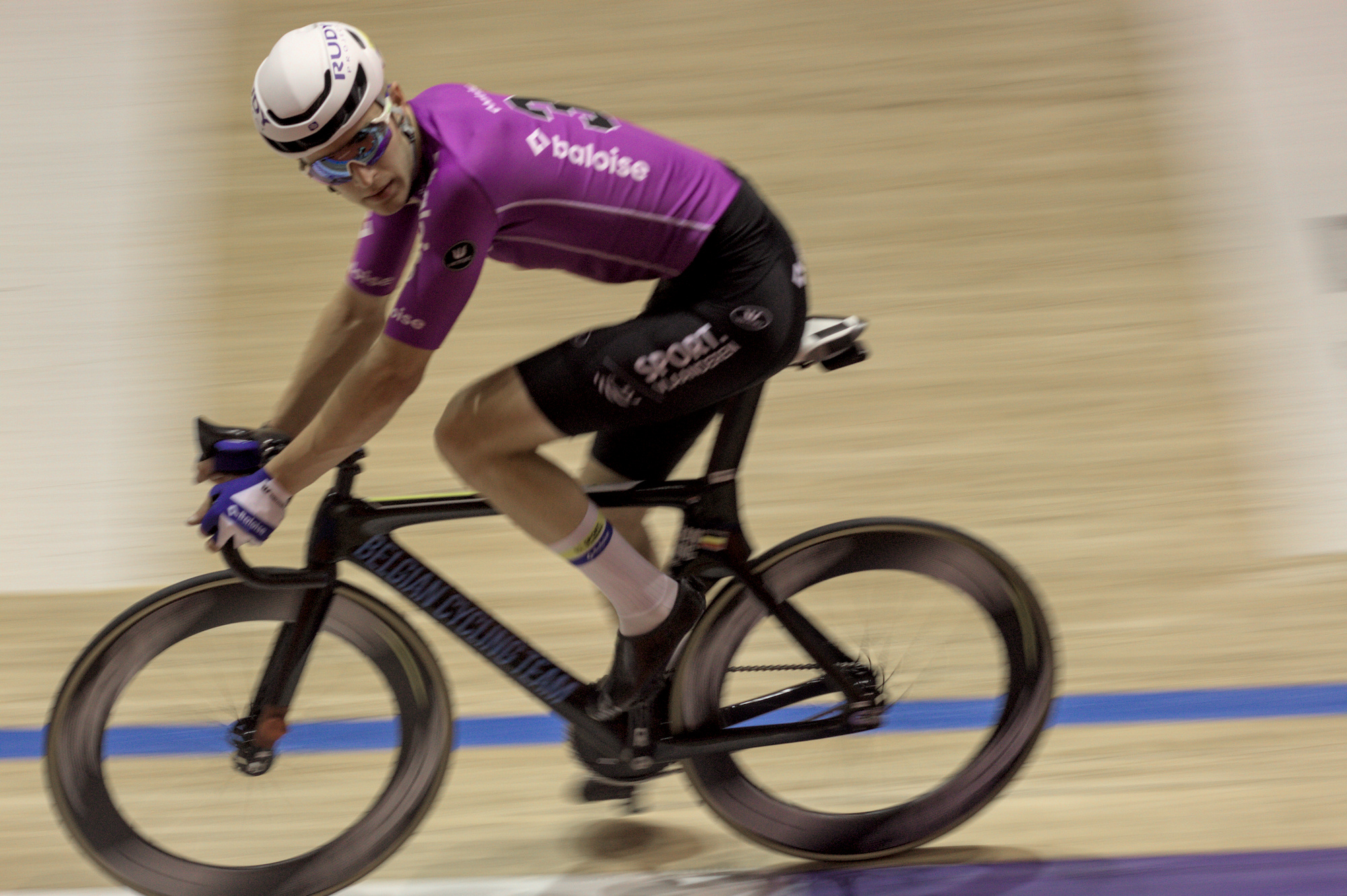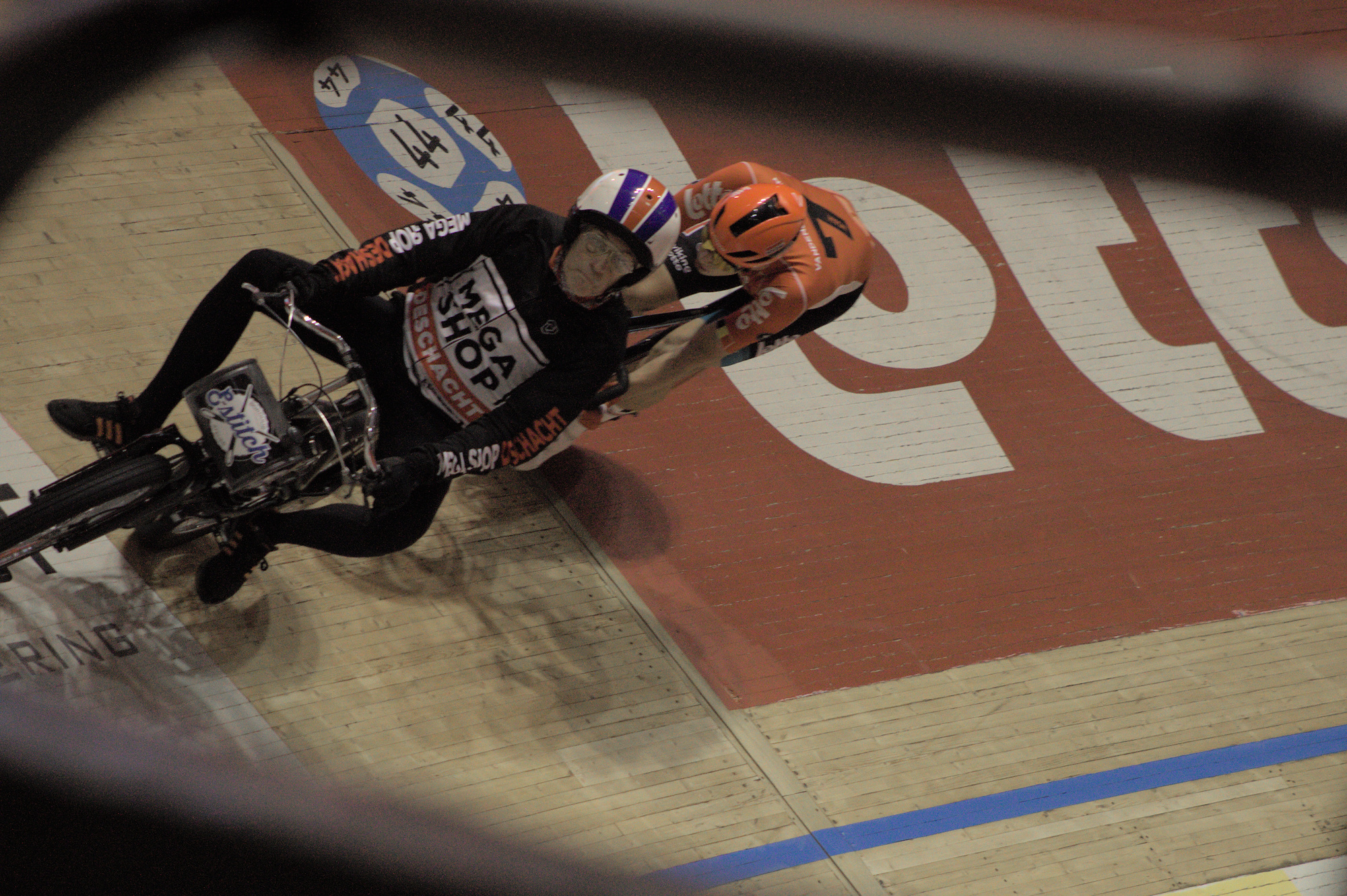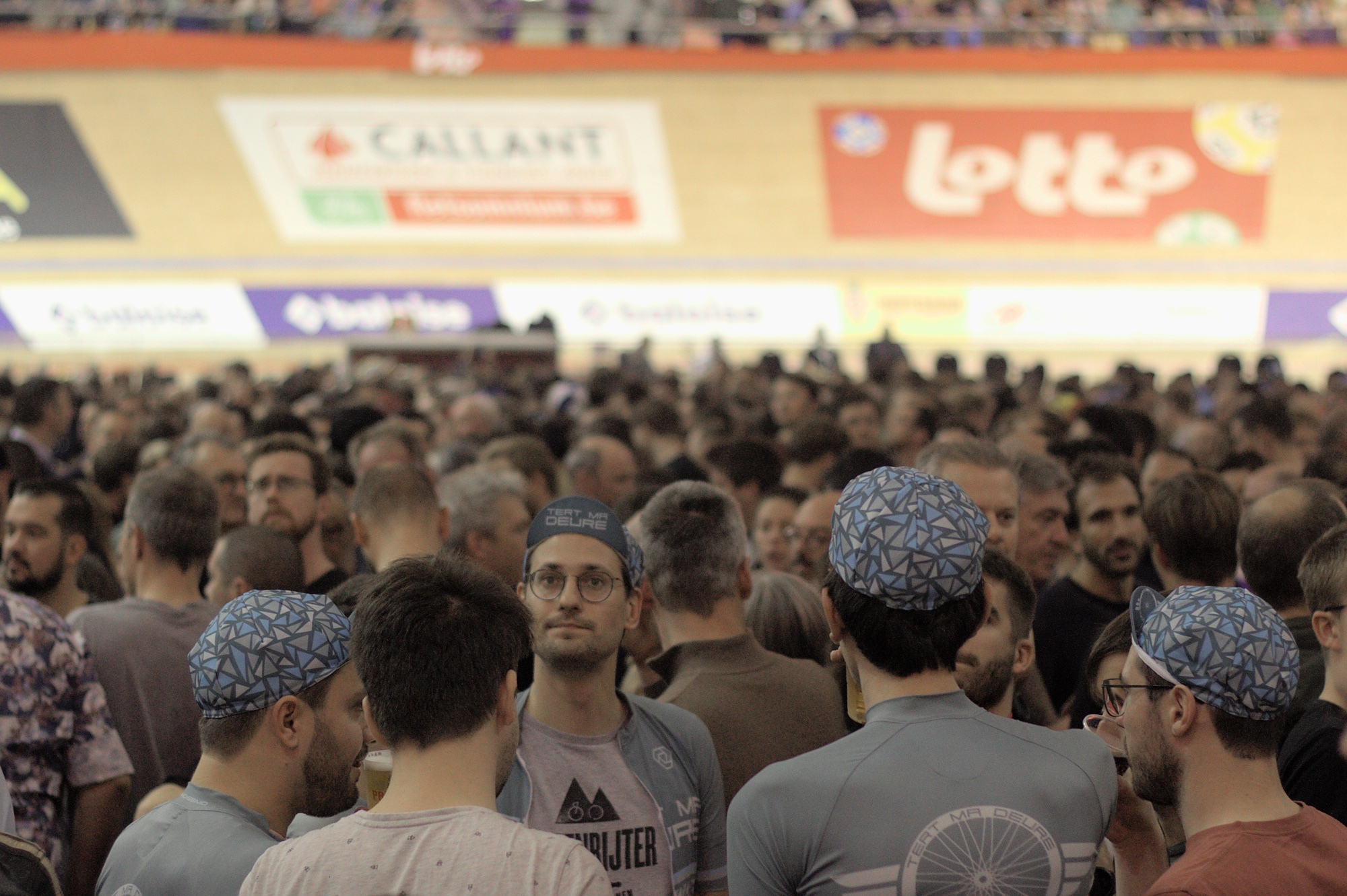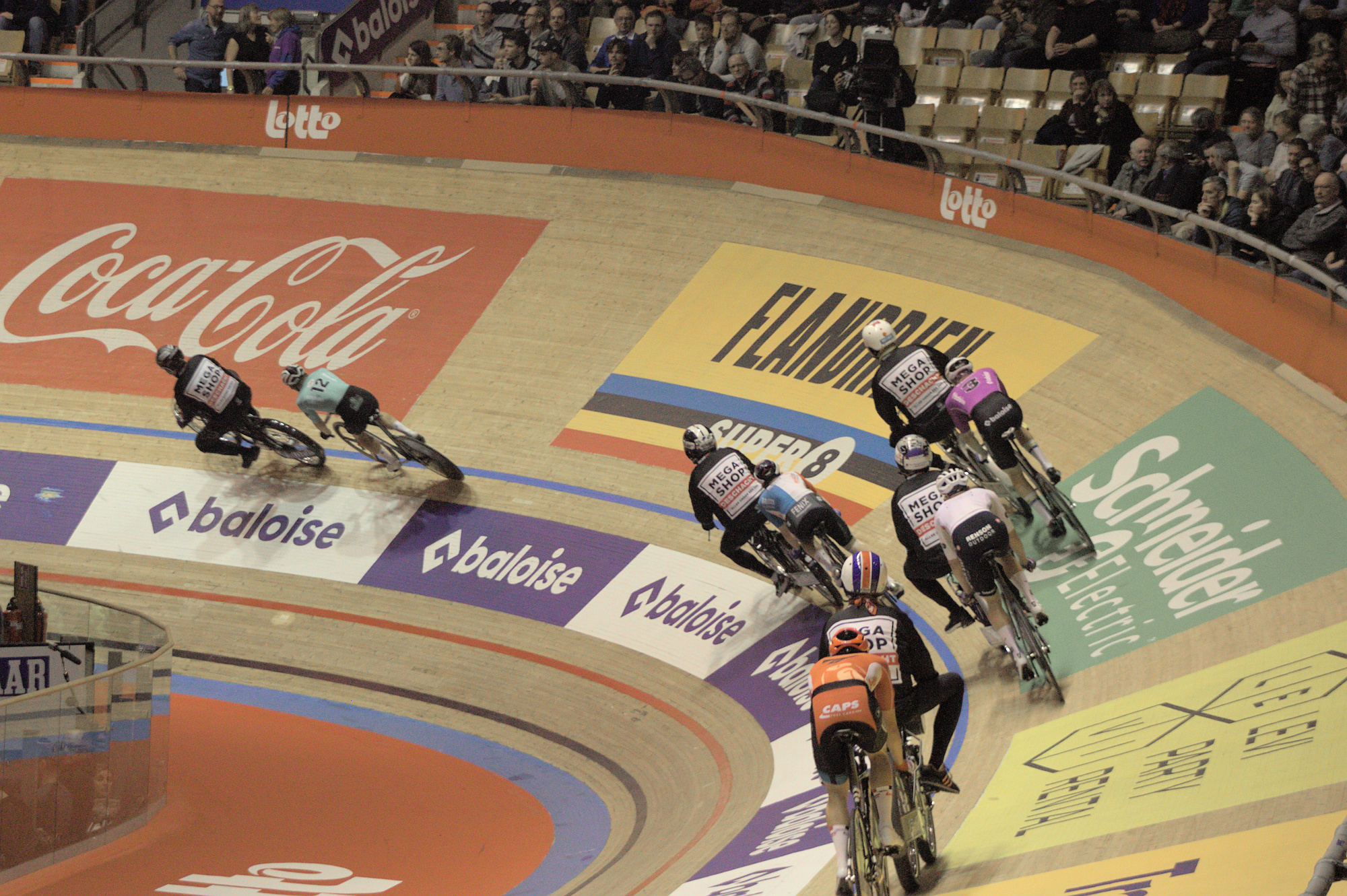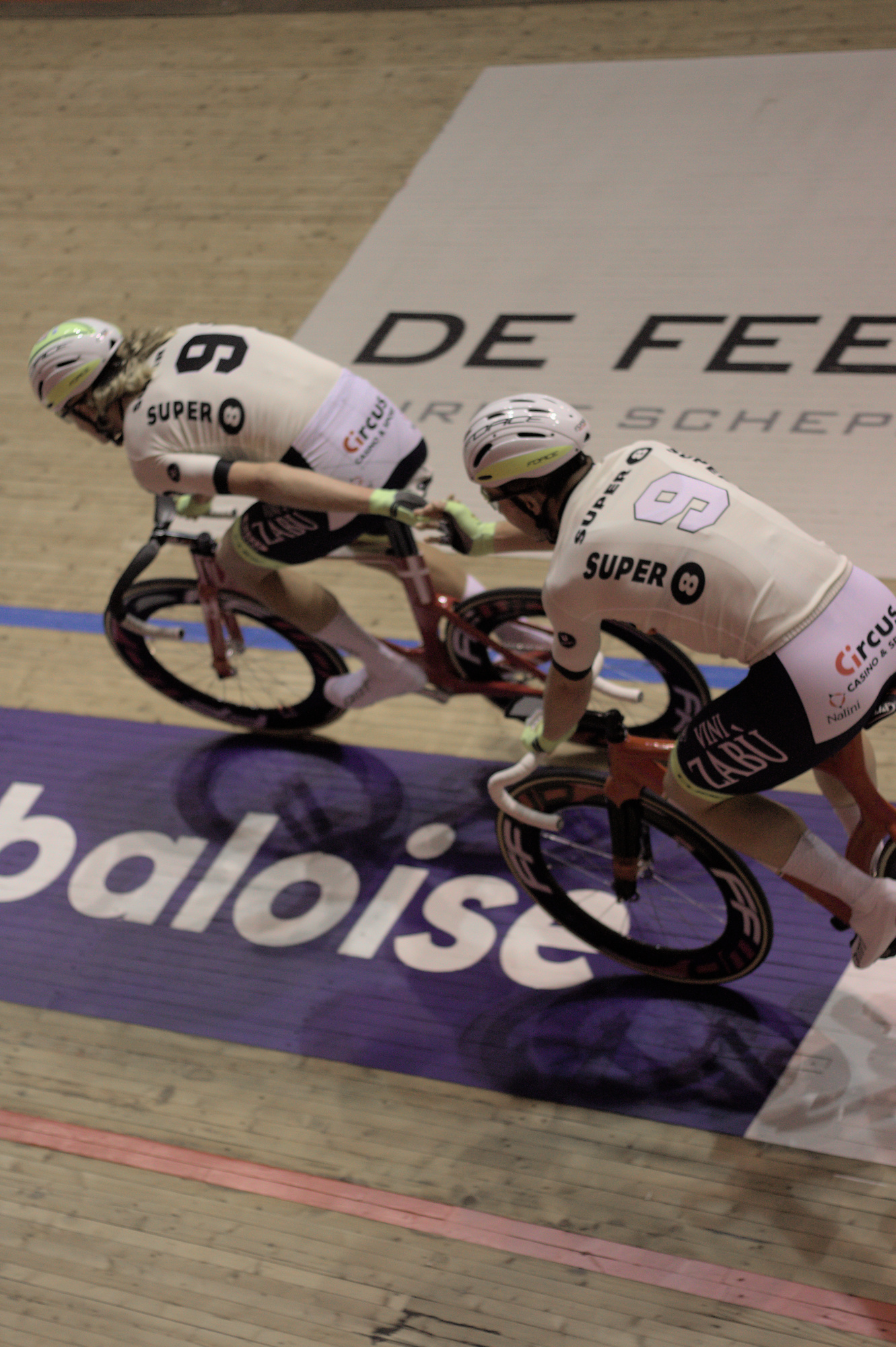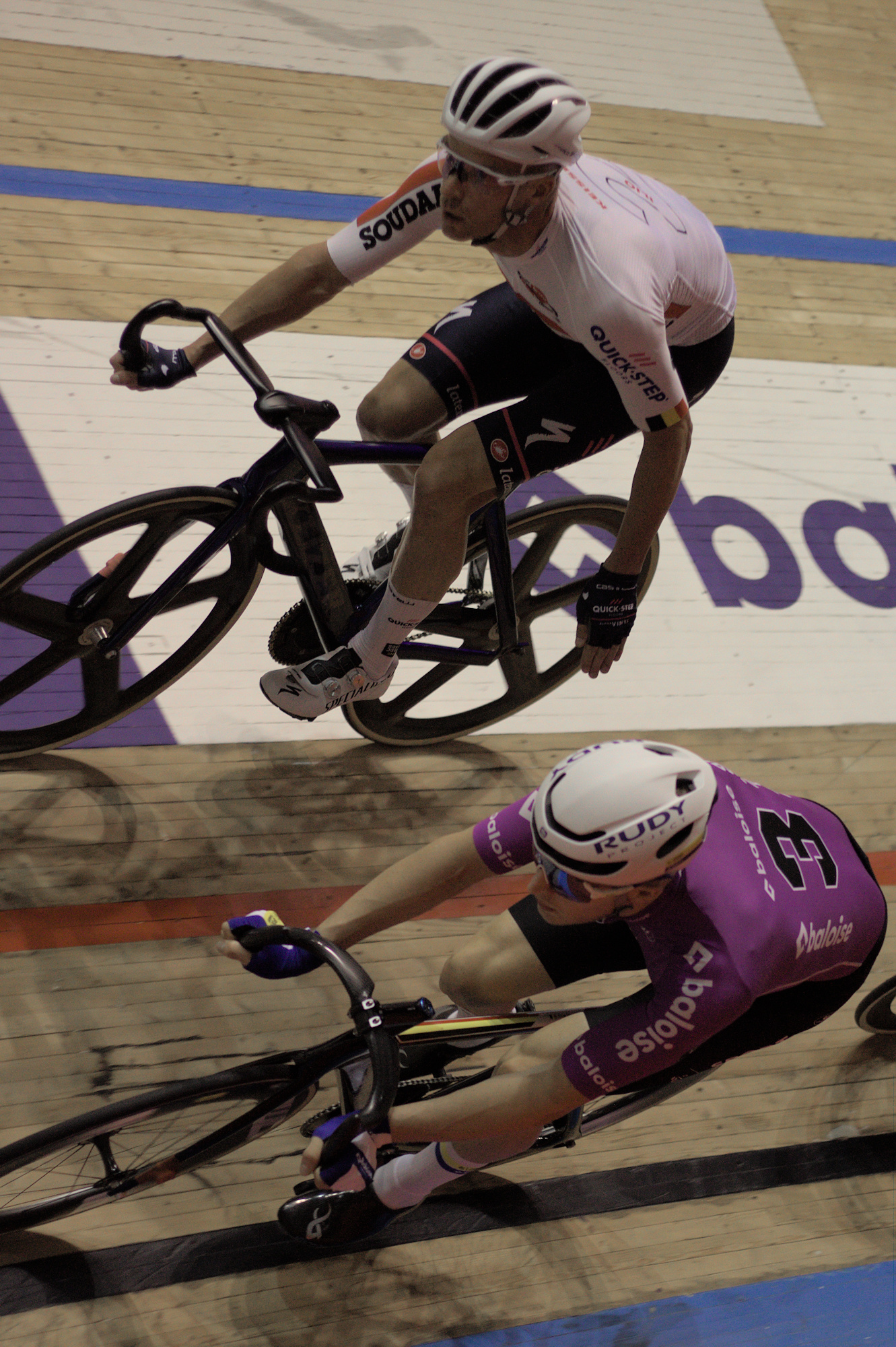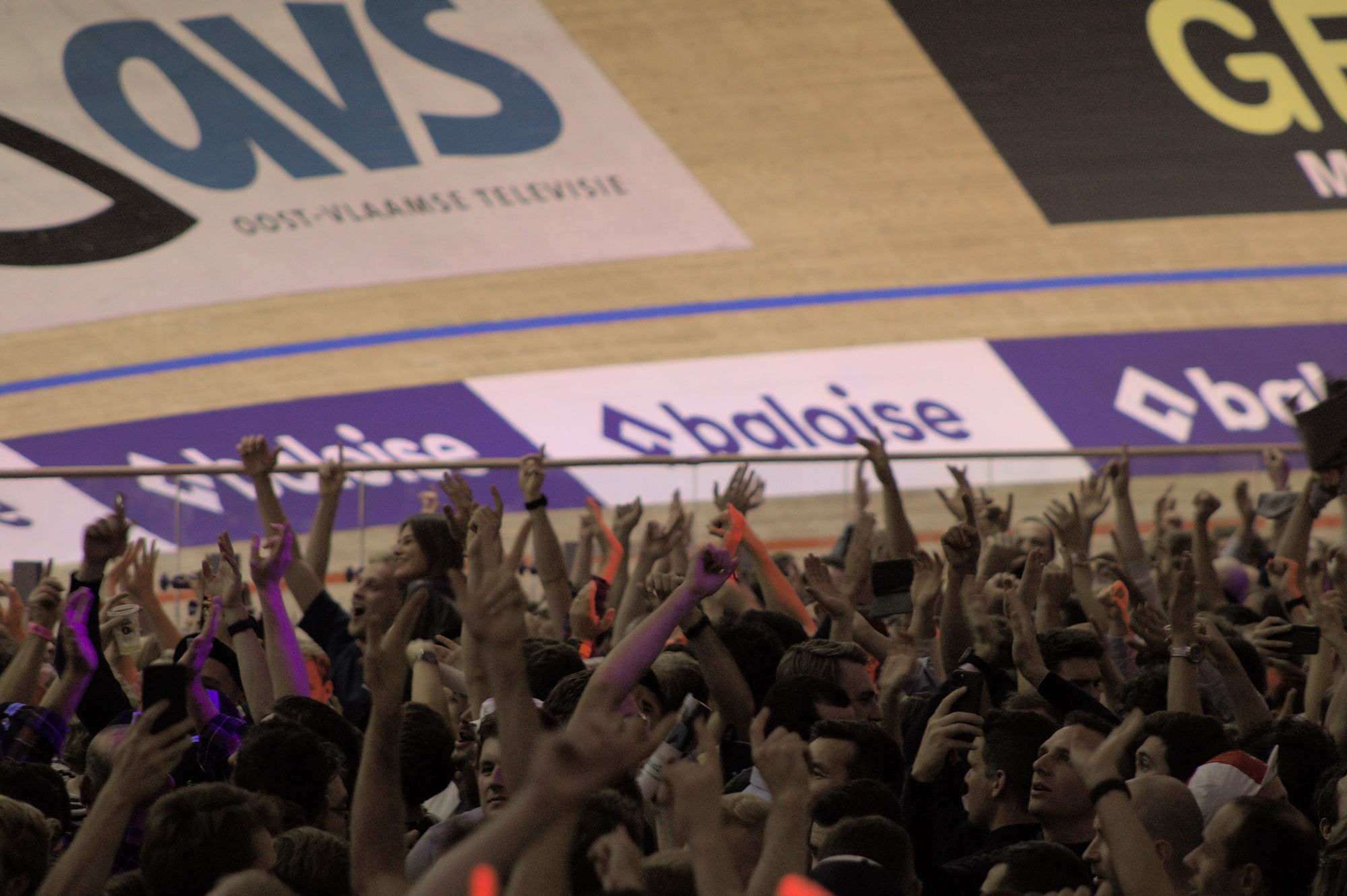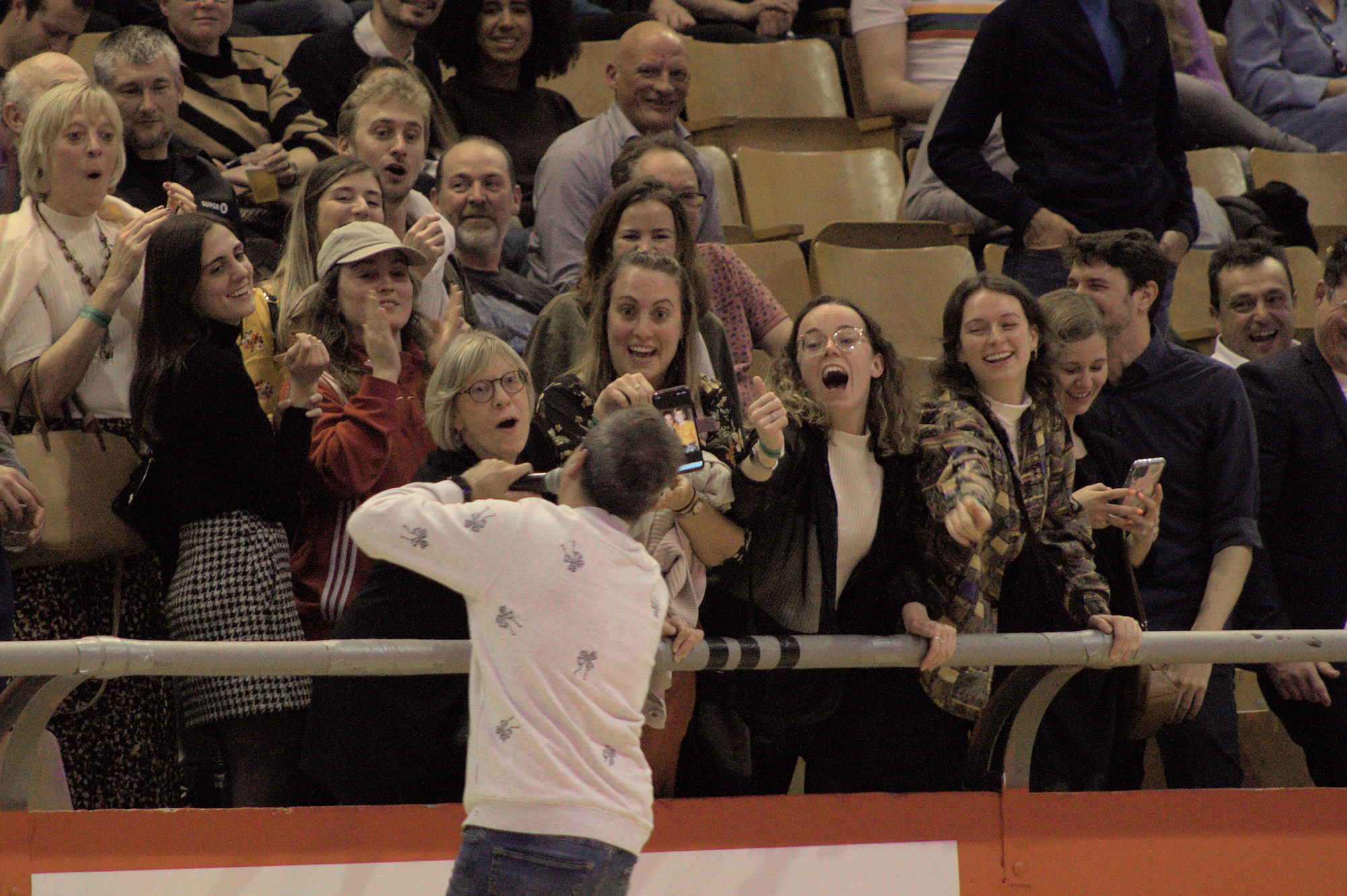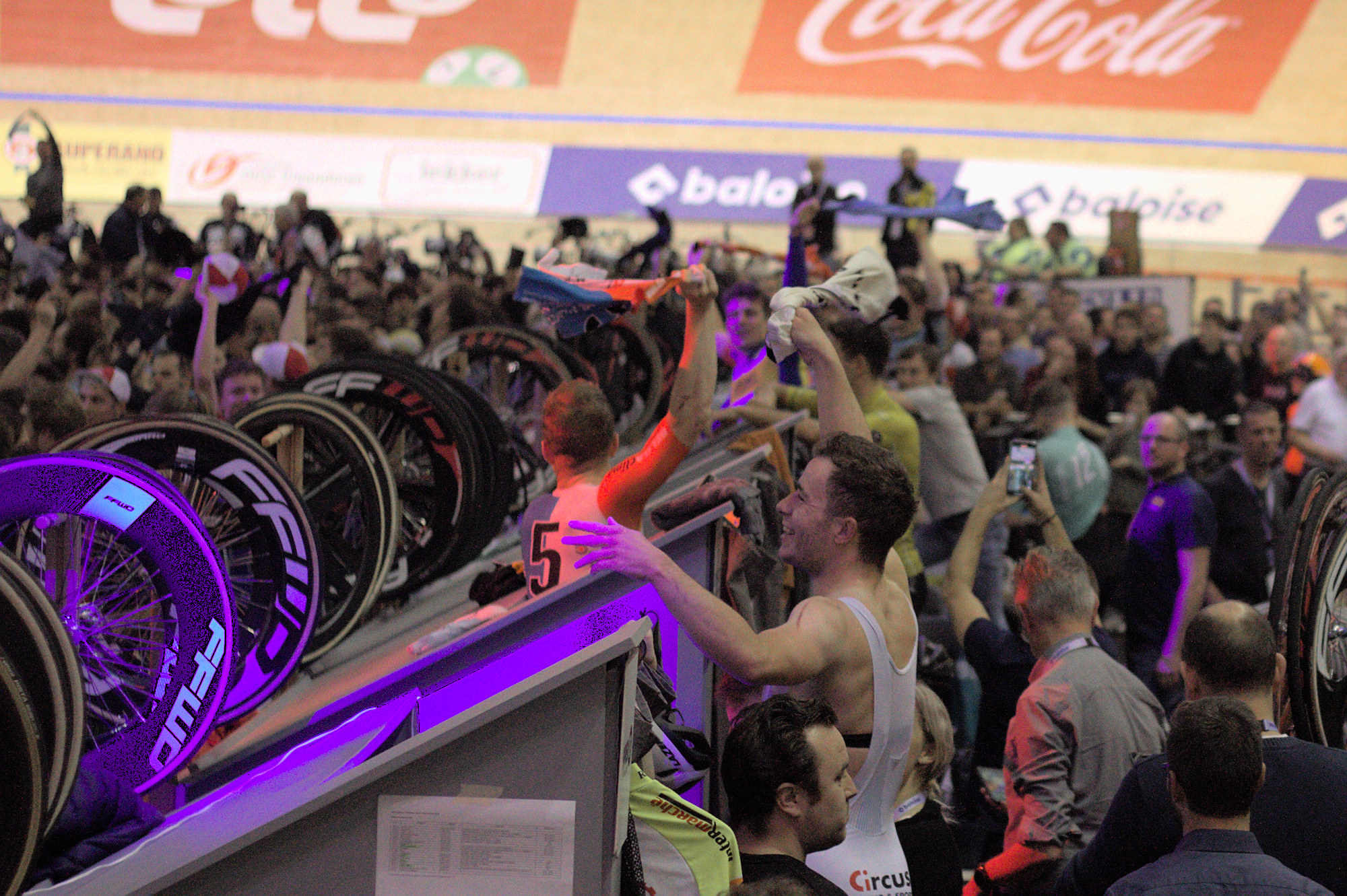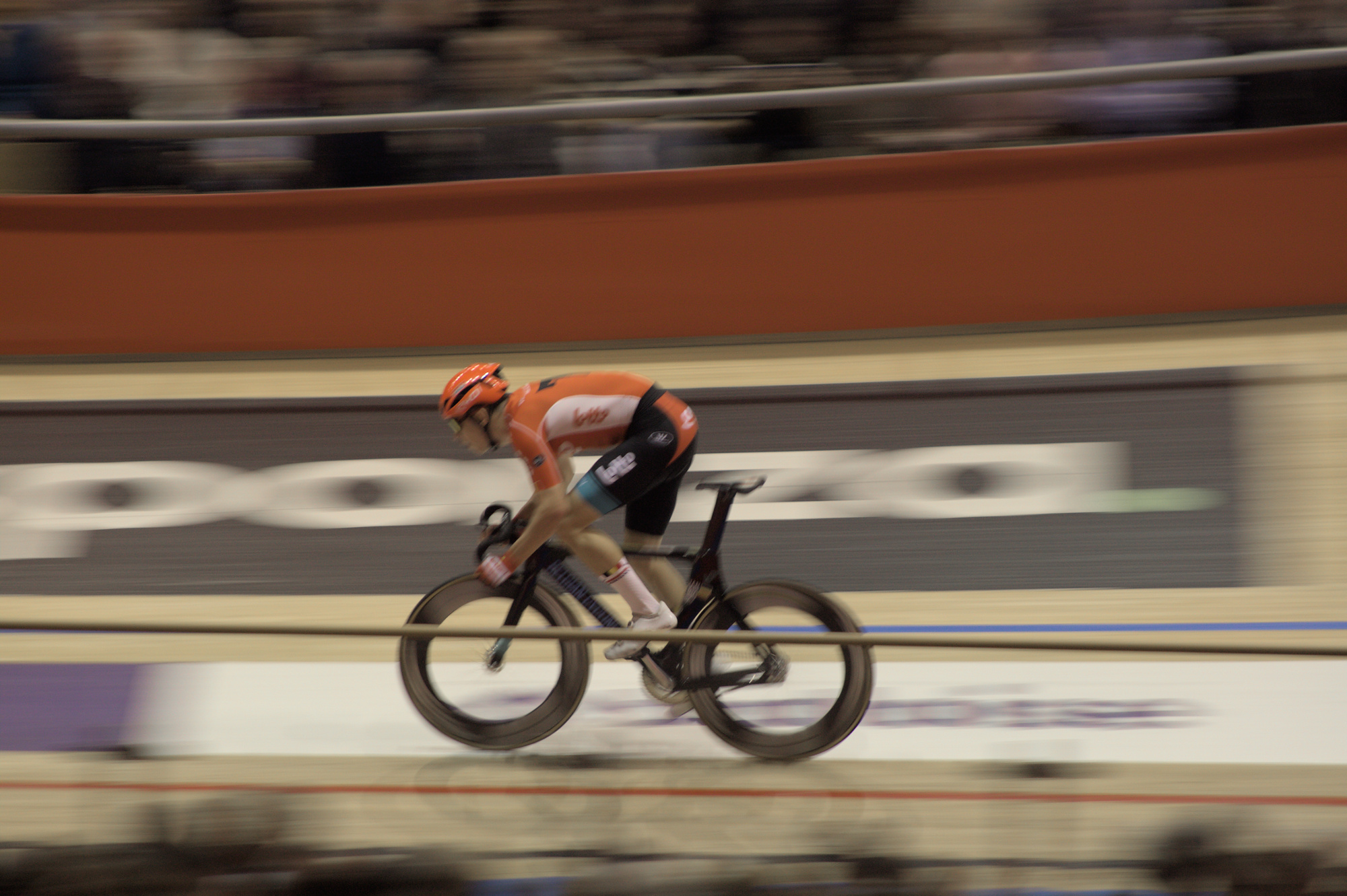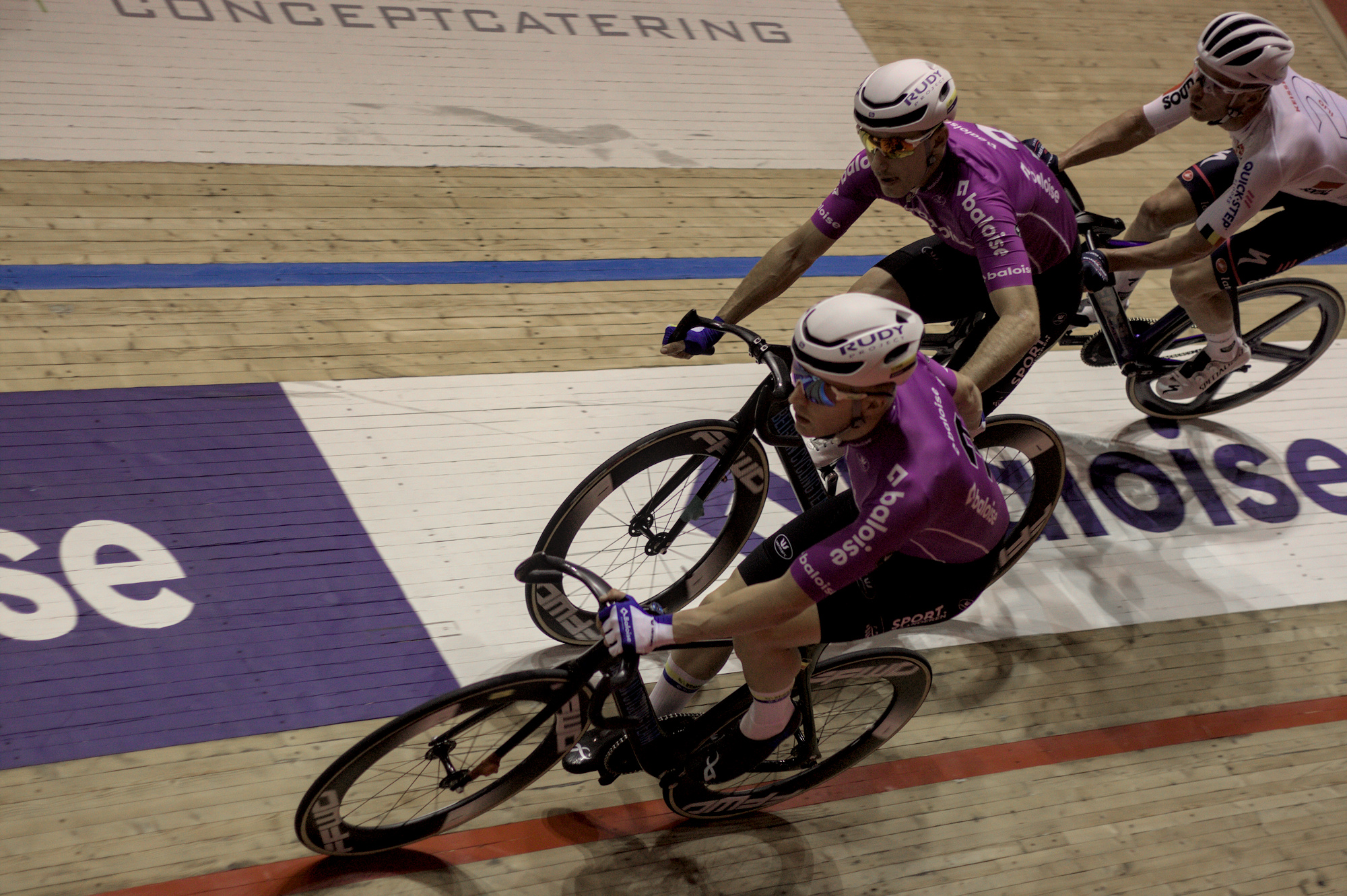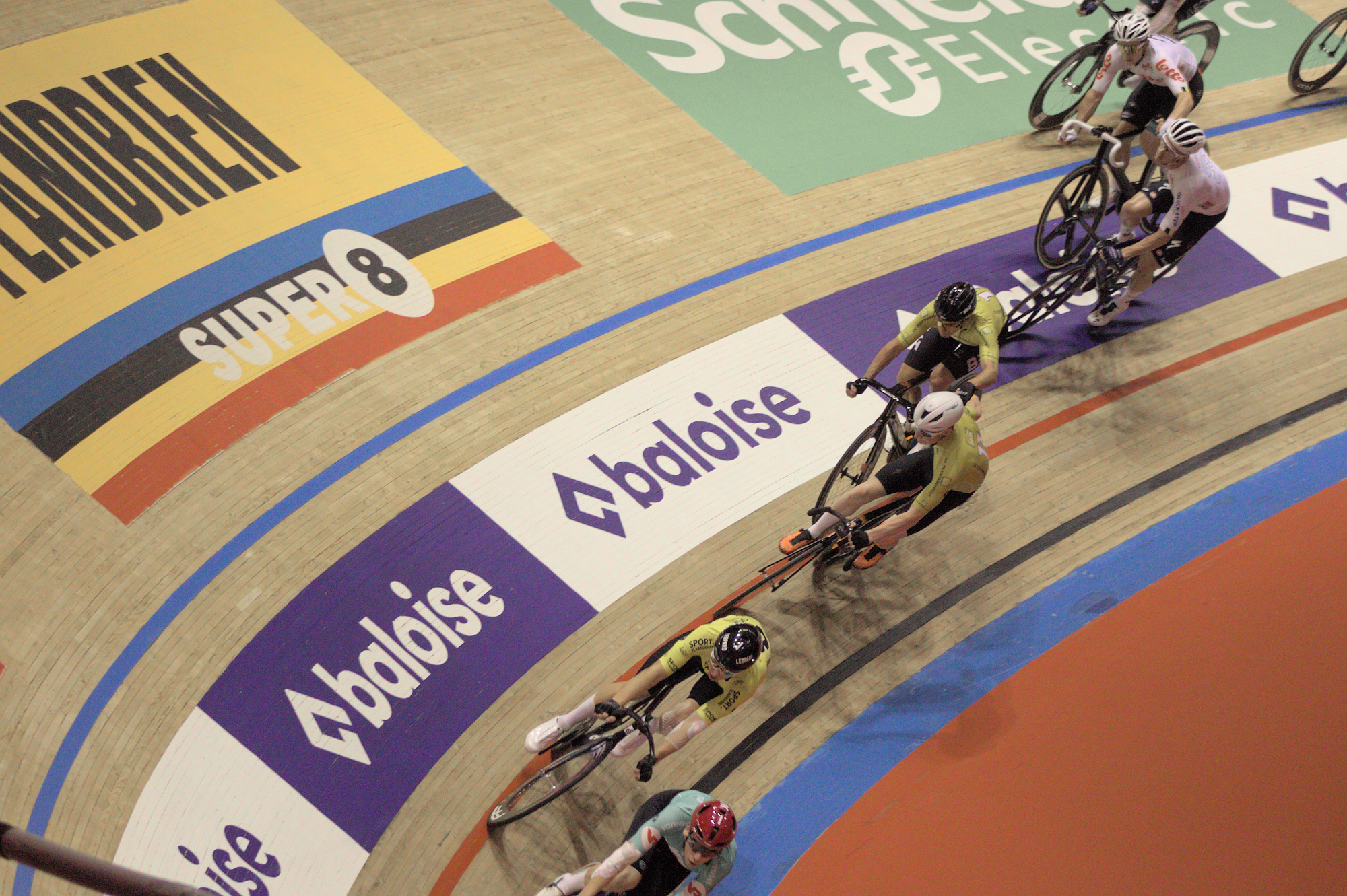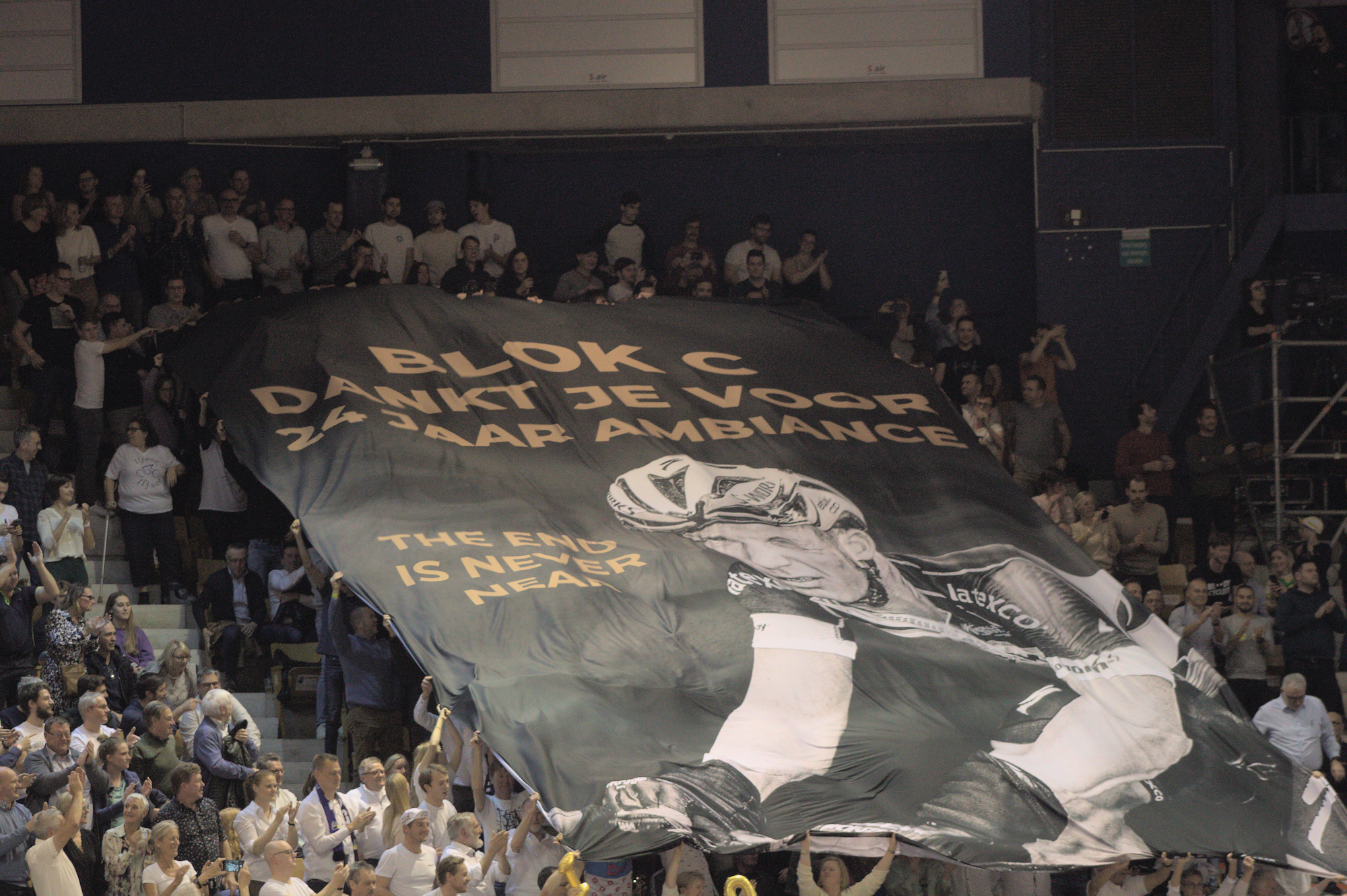If there is an event that can perfectly exemplify how cycling is seamlessly integrated into the Flemish culture, it is the Six Days of Ghent. This year marked the 100th anniversary of the first edition, and the spectators that attended the packed velodrome for six consecutive evenings enjoyed some high-level cycling with a good dose of entertainment.
The Six Days concept originated at Madison Square Garden in New York in the late 1800s. Back then this track cycling competition by pairs was literally six full days of racing, with one rider racing while the other rested. For some time there were dozens of Six Days events organized per year, but as of now only the ones in Rotterdam and Ghent remain.
Long story short
The Six Days of Ghent, locally known as zesdaagse, took place for the first time in 1922 in the Feestpaleis of the Citadelpark. In 2022 the event celebrated its 100th anniversary, but not its centenary edition, It became a yearly event only after World War II, and a fire tragedy in 1962 also put the event on hold for some years as the entire venue had to be built from scratch.
In November 1965 the velodrome, named Kuipke, was reinstated with the same dimensions as the previous one. Unlike the standard velodromes, it has a length of 166,66 meters and a max gradient of 52%, making it a unique, fast track to ride on.
The first edition after the fire tragedy was won by Patrick Sercu and Eddy Merckx. The latter is undoubtedly the greatest cyclist of all time, but no one has dominated the Six Days scene as much as Patrick Sercu did during the 60s and 70s, with 88 wins in total, 11 of them in Ghent.
The Six Days of Ghent have run flawlessly since then, with the exception of the tragic accident that occurred in 2006. The Spanish pair Joan Llaneras and Isaac Galvez were racing with the rainbow jersey after their win in the Madison race of the Track World Championships. The latter had just got married but decided to exchange his honeymoon with a good dose of racing in the Kuipke.
In one of the countless occasions in which someone attacked and the rest followed, the trajectories of Isaac Galvez and Dimitri De Fauw collided, with a fatal outcome for one of them. Galvez hit the fences with his chest, breaking several ribs and unfortunately one of them perforated his heart The 31-year-old rider lost his life in that tragedy.
Not purely track cycling
There are of course similarities with a regular UCI Track Cycling World Cup, but any person that has ever attended the Six Days will tell you that this event goes beyond what is pure competition, and the racing itself also has its peculiarities. Entertainment and sport coming together.
The Six Days of Ghent are raced in pairs, and within the event there are different disciplines: madison, derny race, elimination, time trial, points race, and super sprint. Some require both members to be riding at the same time while others allow one of the two riders to rest a bit, but one way or another they end up riding over 100 kilometers per evening full gas.
In line with the complexity of cycling as a sport in general, one has to familiarize himself with how the ranking works before really understanding what is happening on the track, but do not worry if you don’t get it, as there is a lot of people that go there mainly to get caught in the party atmosphere and not to follow the race.
There was a lot of expectation as the tickets were sold one week before the start, but we could see many empty seats in the stands. It didn’t take long until we realized that the reason was that, while some watched the racing unfold, others spent most of the evening in the catacombs of the Kuipke eating and singing.
Not only there, but in the middle of the track there was also a party going on. Same as in a club at 5 AM, by the end of the evening the floor of the ‘middenplein’ was super sticky due to all the beers that had been spilled. It was also funny to start coughing as soon as we got close to the smoking area, which was the only alternative for smokers. ‘Geen terugkeer’ was hanged in every door, meaning that there was no return if we stepped out. Another proof that we were privileged to be there.
Each day at around 22:30 there was a short pause that allowed the riders to catch a breath or get in the party mood as it was the moment in which local singers stepped into the track to amuse the spectators.
Increasing level of competition
We honestly thought that the level of effort would be low and that riders would be there more as entertainers than cyclists, but we were clearly wrong. It was not like in the post-Tour criteriums, which are organized as a cycling parade. Having the chance to watch the race so close to the protagonists, one could tell by looking at their faces that they really gave it all, with two historical track records as proof.
How fast do you think you could do a lap around the 166,66 meters of the Kuipke? Lindsay De Vylder, supported by the lead out of Robbe Ghys, beat the previous record on two consecutive days, setting 8”332 as the new best time. Tuur Dens did a similar thing in the 500 m time trial, lowering the previous record twice and setting the bar at 26”464.
One of the side events was the Fiberklaar Ladies Cup on Friday and Saturday, which made sure that women also had their deserved time to shine. Lotte Kopecky, who earlier in the season won the Strade Bianche and Ronde van Vlaanderen, received a standing ovation and won three of the four races that they contested.
Stars come and go
The week of racing finished with a one-hour-long madison, and with three teams still in contention for the overall victory, that final race was a pure spectacle in which they relentlessly tried to lap the others to secure the win.
In the end, it was the duo formed by Lindsay De Vylder and Robbe Ghys who finished on the highest step of the podium. For the latter it was the third consecutive win in a row, showing that he can dominate the Six Days scene in the same ways that Kenny De Ketele and Iljo Keisse did in recent years.
Another reason why this was a special edition is that Iljo Keisse, de Keizer van ‘t Kuipke, retired from professional cycling this week. He has raced the Six Days of Ghent on 18 different occasions and won seven times with different teammates. Additionally, one has to take into account the success he had as a road cyclist as part of the Quick-Step team.
It was impossible not to get emotional with his farewell speech, as throughout the week we checked how important is his figure in the race. He is a local from Ghent, so he received overwhelming support day after day, which paid off as he finished third overall together with Jasper De Buyst.
Half of the men elite were Belgian, but although several pairs were fully national, some local riders teamed up with international stars. Current world champions like Yoeri Havik and Ethan Hayter were part of this edition, and one can say that they amused themselves by looking at how they sang along to some of the tunes that banged at the velodrome day after day. Most of them also embraced some of the traditions like tucking their jersey into their bib shorts, the same as it was done in the past when the clothing was too baggy.
Riders, spectators and organizers must be now looking back at the recently finished event with a smile on their face, as it was a successful edition after two years disrupted by the pandemic. People in Flanders love cycling, and cyclists love racing in Flanders.




